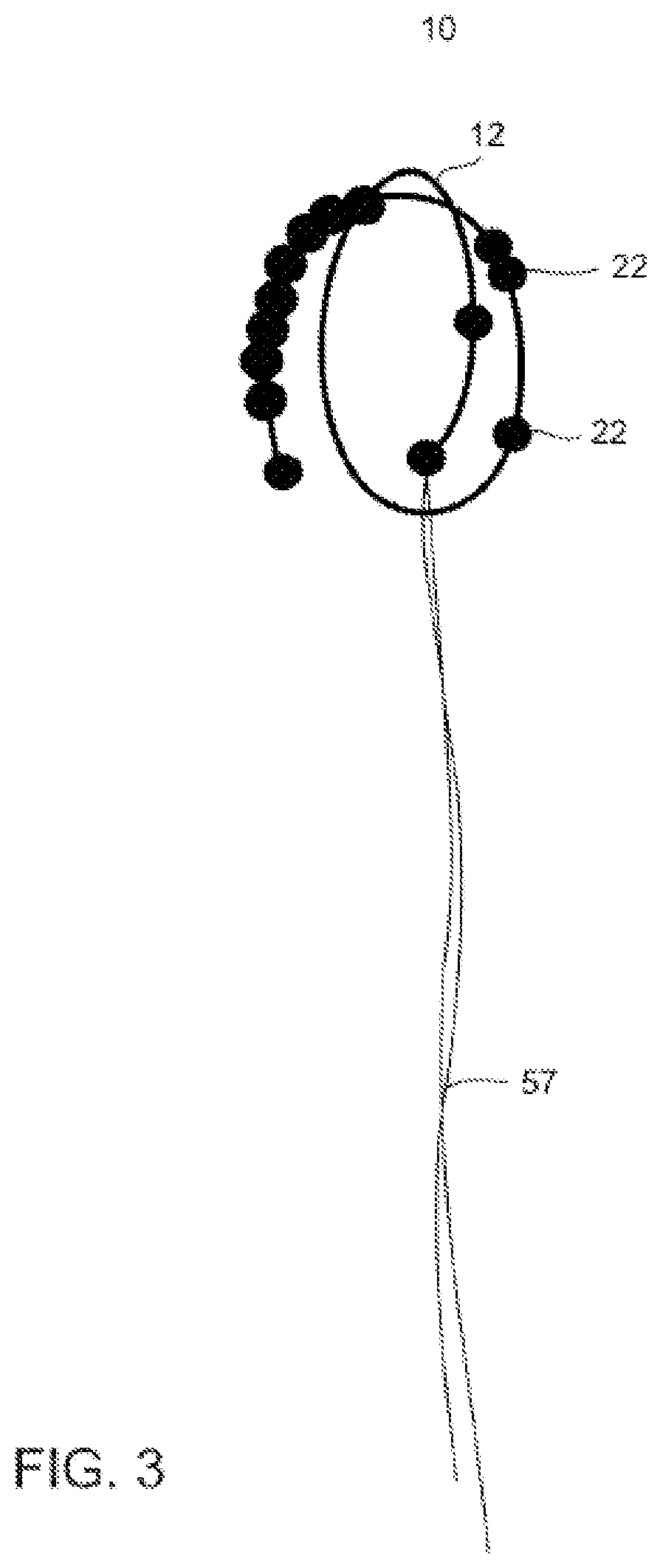Device positionable in the uterine cavity and method of treatment thereof
a technology of uterine cavity and device, which is applied in the direction of medical preparations, female contraceptives, other medical devices, etc., can solve the problems of adverse economic impact, adverse side effects and ongoing cost of care, adverse effects on patients and healthcare systems,
- Summary
- Abstract
- Description
- Claims
- Application Information
AI Technical Summary
Benefits of technology
Problems solved by technology
Method used
Image
Examples
example 1
[0099]The device contains a plurality of beads. This example discloses the preparation of the plurality of beads having a solid form of formulated active materials (i.e., salt components) combined with a soluble binder. In this example, 90% of formulated active materials are combined with 10% of a binder on a weight basis. The binder or binding agent, is prepared from a solution of 20% w / w hydroxy propyl cellulose (HPC) and 80% w / w ethanol. Thus, the starting materials are 90% w / w salt components, 2% w / w HPC and 8% w / w ethanol. The binder solution is prepared and conditioned for 2-3 days before mixture with the formulated active materials. The binder solution is dried at 70 to 80° C. to evaporate the ethanol to result in the final HPC binder. In this example, after complete drying, 2.2% w / w HPC and 97.8% w / w salt components are present.
example 2
[0100]A phase I clinical study, recruiting up to 10 women, was designed to evaluate the safety and efficacy of device disclosed herein. The subjects were scheduled to undergo hysterectomy due to AUB of benign causes, who failed or could not tolerate medical therapy (1st line) or who preferred treatment options not requiring frequent dosing. The investigational treatment involved a thirty minute endometrial ablation session using the device, executed in the operating room, immediately followed by the planned hysterectomy procedure.
[0101]Efforts were made to recruit an equal number of women with high endometrial thickness (>7 mm) and low endometrial thickness (<7 mm). On the day of surgery, the subject underwent a vaginal ultrasound, to re-measure the endometrial thickness, and hysteroscopy, to visualize the uterine cavity and the endometrium. The device was inserted, under general anesthesia and under uterine visualization, into the uterine cavity via the vagina, and left in the uter...
example 3
[0106]A Phase IIA randomized, perspective pre-pivotal study was designed to assess the safety and performance of the device disclosed herein and the ablation procedure. The study was performed in an outpatient setting in women suffering from AUB, with follow up for 12 months post-treatment. The subjects underwent a 30-min endometrial ablation session using the device disclosed herein, in a hospital outpatient clinic. There were two cohorts. Cohort I comprised women experiencing a sub-optimal treatment response (at least 3 months and no later than 12 months after the first treatment) who were eligible to receive a second treatment using the device disclosed herein. Cohort II comprised women who underwent a second treatment session within 7 days following cessation of their next menses or, in cases where menstruation could not be defined, 28-29 days following the first treatment session. The patients were randomized to cohort I and cohort II. The average patient age was 42 years, aver...
PUM
 Login to View More
Login to View More Abstract
Description
Claims
Application Information
 Login to View More
Login to View More - R&D
- Intellectual Property
- Life Sciences
- Materials
- Tech Scout
- Unparalleled Data Quality
- Higher Quality Content
- 60% Fewer Hallucinations
Browse by: Latest US Patents, China's latest patents, Technical Efficacy Thesaurus, Application Domain, Technology Topic, Popular Technical Reports.
© 2025 PatSnap. All rights reserved.Legal|Privacy policy|Modern Slavery Act Transparency Statement|Sitemap|About US| Contact US: help@patsnap.com



